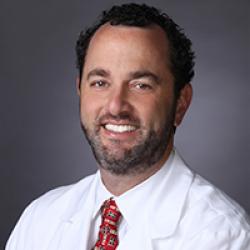Editor’s note: The opinions expressed by the author do not necessarily reflect the views of the AAMC or its members.
At first, the experience was reasonable. I was a first-year medical student at Case Western Reserve University, taking Normal Physiology. I began to picture my blood flowing smoothly in my kidneys, exchanging ions across tiny renal tubes. I also imagined my other bodily systems chugging along nicely as we studied them in class. It was a sort of biological mnemonic system.
But things changed in my second year. During Pathophysiology, I began to grasp when normal becomes dysfunctional or diseased. Inflammation. Obstruction. Neoplasia. The dismaying terms were coming at me.
Classmates also began sharing “aha!” moments about conditions that touched their families. One had a cousin with cystic fibrosis, and many had relatives struck by cancer. It was a quick mental jump to the idea that something we were studying could affect any of us. Or me.
I found learning about malignancy and metastasis particularly frightening. There was martial language involving effaced boundaries, invasion, hijacking of the blood supply, and cellular "takeover." I knew that I was "too young" statistically, but still, a nagging thought arose: there are always some rare cases.
It was a quick mental jump to the idea that something we were studying could affect any of us. Or me.
I was beginning to succumb to “medical student syndrome,” a not uncommon condition in which students and residents develop symptoms of diseases they are studying. Mental health professionals consider the syndrome a subgroup-specific form of hypochondriasis: having a fear of or preoccupation with serious illness despite appropriate evaluation or reassurance.
Medical student syndrome is a well-known phenomenon, often treated derisively by classmates and colleagues once it's acknowledged. I remember deans and attending physicians warning about it during medical school, often relating stories of their own occurrences of the condition or even more absurd-sounding delusions of their classmates.
The underlying message was clear: You don't have the disease you think you do, and the act of studying a condition doesn't make it more likely. (Except when it does. In an excellent 2013 column, Barron Lerner, MD, of New York University reviewed the literature and offered a tale of two of his medical school classmates — dismissed as having medical student syndrome — who turned out to have serious illnesses.)
But being forewarned had little effect on me as I slid further into worry.
The module on skin diseases made me the most anxious. I felt like I'd had most of the rashes we studied. I have numerous birthmarks on different parts of my body. Were they benign? Dysplastic? Malignant? Making matters worse, I'm fair-skinned, and I rarely used sunblock as a kid, growing up at a time when we were blissfully unaware of ozone holes in our atmosphere.
One night during the Dermatology unit, I peered at my back in the mirror and saw a mélange of black and brown splotches, pink spots, and red dots. I'd learned the fancy doctor-talk for these occurrences: macules, papules, petechiae. (Or are they ectasias?)
The coup-de-grace came the next day: We had a startling lecture about melanoma. A dermatology faculty member showed us numerous slides, highlighting the ABCD of risk factors: Asymmetry, Border (irregular), Color (variegated), and Depth — the most ominous because any lesion that’s more than 0.75 millimeters deep more than doubles the risk of spread.
He put up another slide of an enlarged melanoma and told us about a patient in his 40s. "Dead!" he exclaimed. And he shared several similar horror stories. The room fell silent. It was one of the most unforgettable lectures throughout all of medical school.
My mind began to race. Surely, given my skin tone and sunburn history, many of my spots had to be melanomas. I concluded I was living on borrowed time. I knew I wouldn’t sleep well unless I had my spots checked.
I made a doctor's appointment. Not at all reassured by the prudent physician who suggested mapping and watching, I insisted on a consultation with a dermatologist. I pushed for skin biopsies, only later to feel regret for bothering to undergo the procedures when the results were all benign.
He put up another slide of an enlarged melanoma and told us about a patient in his 40s. "Dead!" he exclaimed.
My experience certainly is not unique. Over the years, different researchers have reviewed medical student syndrome with wide-ranging results, sometimes demonstrating prevalence rates as high as 70% to 80%.
Decades later, I now see the shoe on the other foot. Rather than our own medical-topic-induced foibles, my peers and I are confronted on a daily basis by patients who have fallen down symptom-driven rabbit holes enabled by the Internet, experiencing "Google's Disease," or "cyberchondria."
Commentators have written with acrimony about patients who present with a diagnosis already self-determined. And it’s easy to get frustrated by patients who insist on certain diagnostic tests or treatments that don't seem merited when assessed using our medical expertise and clinical judgment.
But my experience with medical student syndrome has made me more sympathetic to patients researching their own symptoms. In fact, when I’m not at work, where I have myriad clinical information tools available, Google is the first place I’ll turn for a medical question or to jog my memory when a less-familiar topic comes up.
In addition, upon further reflection, I have found that medical student syndrome never fully goes away. It’s more of a relapsing and remitting condition. With time and experience, I’ve learned to handle the anxiety, intellectualizing down the fears with better probabilistic thinking. Knowing well that brain tumors are rare, each headache becomes less likely to overwhelm.
I wear the scars of my overzealously sought skin biopsies with less shame as time passes.
It’s not always easy, though. When family members develop new symptoms, the human response is often, “Let’s get an MRI!” The more measured, doctorly response is, “Let’s give it some time and see if it goes away on its own.”
Looking back to my student years, I’m embarrassed to have pushed for what wound up amounting to unnecessary testing. But I wear the scars of my overzealously sought skin biopsies with less shame as time passes. Those wounds are only dermis deep — the emotional aspect of the experience plumbs further.
Fear of death lies at the heart of both medical student syndrome and hypochondriasis in general. As medical professionals, we are confronted with death in our work regardless of which field we wind up in. With passing years and added perspective, however, the depth of my fear has diminished to a significantly shallower, more manageable level.

